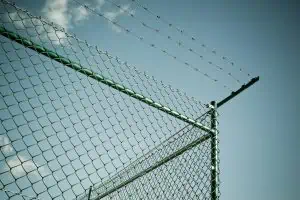How to Build a Cedar Fence?
If you are considering building a fence for your home, you may want to consider cedar. This type of wood is known for its durability and strength. A cedar fence is also great for protecting your home from unwanted sounds. While cedar is a great choice for your fence, you’ll need to take some steps to maintain it properly.
(Looking for Missoula fencing companies? Contact us today!)

First, make sure the soil around your post holes is dry. If it is wet, your cedar fence will be susceptible to warping, splitting, and cracking. You should also install a water tight concrete base to keep water from coming in contact with your new fence. This is a good idea for all types of fences, but especially for cedar.
Next, use a string to measure out the height of your fence. This will help you to determine where to position your posts. Then, set the stakes using a hammer or mallet. You should try to get the lines as straight as possible. You will also need a guide string to keep the line level.
Next, add a small mound of wet concrete near the fence post. You can create this mixture by combining gravel with sand. Be careful to add just enough to cover the area you want the concrete to cover. This may require a shovel. When you are done, leave the concrete on the ground around the post to cure. It will take about 24 hours for the concrete to harden.
While most people think of cedar as a rustic option, you can also get a white cedar fence for a more modern look. A white cedar fence is a good choice if you are looking for a wood that is eco-friendly, resistant to insects, and aesthetically pleasing.
The top most benefits of using cedar to build a fence are its natural strength and ability to stand up to moisture. While a cedar fence will weather with time, it can be cleaned to extend its life. A pressure washing is a good way to clean off dirt and grime, and can also preserve the reddish color of your cedar fence.
When building your fence, you should consider three basic elements: a solid, straight post; a rail to support the rails; and fence pickets. The post and rails are generally vertical uprights, while the pickets are usually attached to them. Each picket can be fastened to the rails with two screws per rail. You should space the pickets no more than about 1/4 inch (0.64 cm) from the ground.
When deciding between cedar and other materials, consider the climate in your area. Some woods do better in colder climates, and others are suited to hot, humid climates. It’s also important to make sure your posts are well anchored. If they aren’t, they could easily bend or break. If you do choose to install a cedar fence, be sure to clean the posts once a year, and inspect them for loose or rotting boards.

